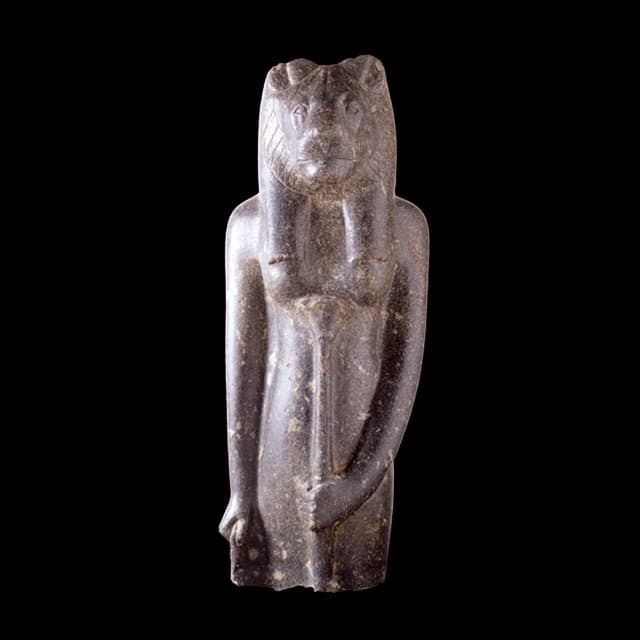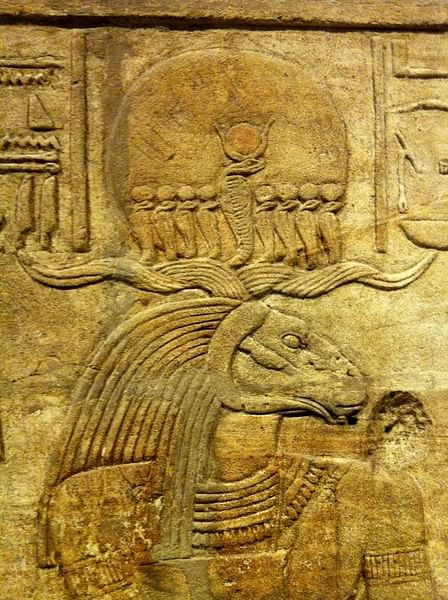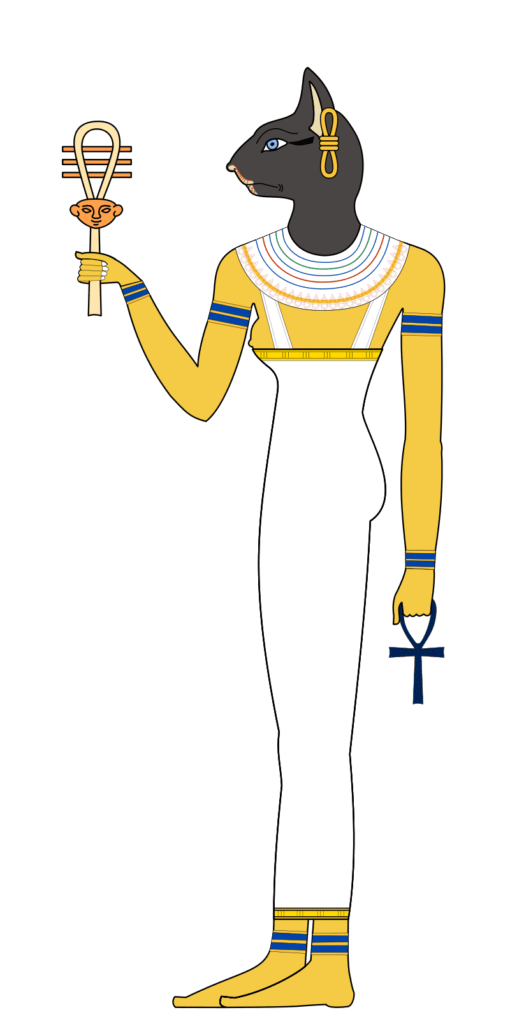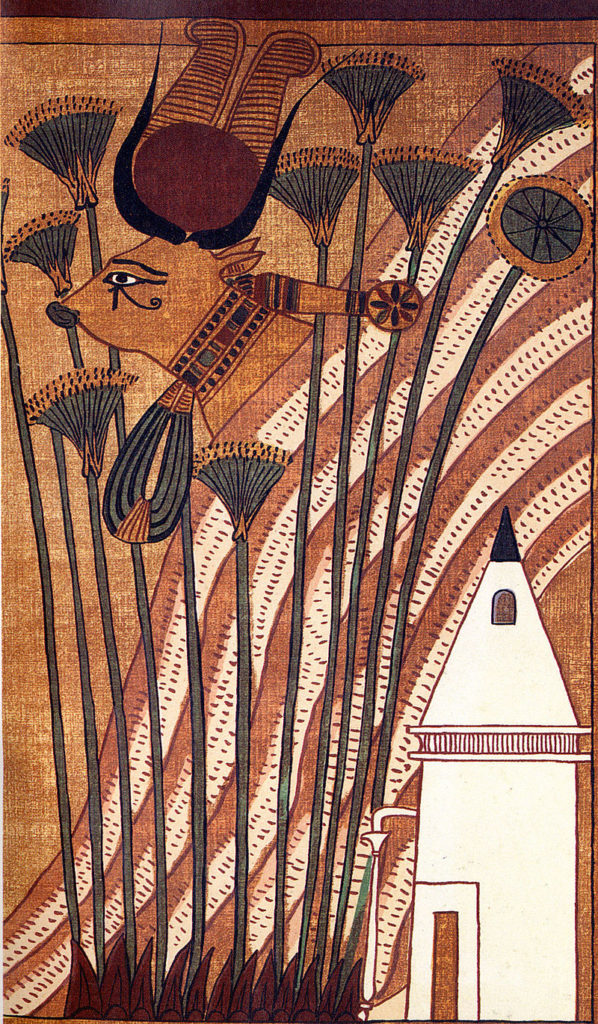Last updated on September 28th, 2022 at 10:24 pm
If you’re a fan of ancient Egyptian mythology, then you’re probably familiar with the most popular gods and goddesses such as Ra, Osiris, Isis, Horus, and Anubis. However, many other lesser-known deities are worth learning about.
Each of them played an important role in Ancient Egyptian culture and religion. So without further ado, let’s get started!

Amun
First on our list is Amun. He was a god of the air and one of the most important deities in Egyptian mythology. His name means “hidden” or “the unseen one,” which is fitting because he was often depicted as a man with a veiled face.
Amun was believed to be the creator god and the protector of Pharaohs. He was also associated with the sun god Ra.
Amun was usually depicted as a man wearing a feathered headdress and holding a scepter. He was sometimes shown as a ram or as a snake. His wife was the goddess Mut, and his son was Khonsu, the moon god.

Some of the practices surrounding Amun would include wearing amulets with his image on them and offering sacrifices to him. More recently, Amun was popularised in the hit Marvel series Moon Knight, which aired on Disney Plus.
The temple of Karnak depicts Amun as the supreme god of Ancient Egypt, but only in the early days. It wasn’t until around 10BC that Amun’s dominance began to wane, and he soon found his role as a national god, whereas other gods like Ptah, Khonsu, and Re-Horakhty became more prevalent in Egyptian culture.
Bastet
Next on our list is Bastet. She was a goddess of cats, protector of women, and the patroness of Lower Egypt. Bastet was initially depicted as a lioness or a woman with the head of a lioness. However, later she was usually shown as a woman with the head of a lioness and, even later on, a cat.
Bastet is one of the reasons why cats are so revered in Egypt, even to this day. In ancient times, cats were considered sacred and were often mummified after they passed.

Bastet sometimes wore a crown with two cobras on it. Her husband was Ptah, and her son was Maahes, the god of war, and the daughter of Ra, the Sun God. Bastet was worshipped for a long time, and many suggest that this could have started as far back as the Second Dynasty, which fell around 2890 BC.
While Bastet had various shared roles with other gods and goddesses, like Sekhmet and Hathor, her main focus was on women, children, and cats. It is said that she could even cure infertility and diseases of the eye.
Hathor
Hathor is a goddess of love, beauty, fertility, music, and dance. While not one of the most well-known goddesses, she was undoubtedly one of the most popular goddesses in Ancient Egypt because she was thought to bring joy and happiness. Hathor was often depicted as a woman with the head of a cow or as a cow.
She was also associated with the Eye of Ra, which was a symbol of protection. Hathor’s husband was Horus, and her son was Ihy, the god of music.
Hathor was actually known for being one of the 42 state gods and goddesses of Egypt, which means that she was worshipped in every temple in Ancient Egypt and shared many roles with other gods, such as the Eye of Ra.
This means that Hathor was a goddess with many different aspects, which is likely why she was so popular. People would have prayed to her for various reasons, including love, beauty, and protection.

However, that didn’t mean she didn’t have a vengeful and violent side, and this would certainly be shown when she needed to protect her worshippers and Ra from his enemies.
She was known for being the protective goddess of women, but that didn’t mean that men didn’t worship her either, as her temples would contain both priests and priestesses.
Since Hathor was a sky deity, this means she was associated with the stars, which explains why she was also known as the “Lady of the Stars.” And because of her connection to fertility, she was sometimes called the “Great Cow who gave birth to Ra.”
Sekhmet
Sekhmet is a goddess of war, fire, and destruction. She was one of the most feared goddesses in Ancient Egyptian mythology. Sekhmet was often depicted as a woman with the head of a lioness or as a lioness and was a solar deity and the daughter of Ra.
Most often, she would spend her time protecting pharaohs as they entered battle and would help to guide them. If a pharaoh were to perish in battle, then she would continue to watch over them in the afterlife.
She was usually shown wearing a red dress, which represented her connection to fire. Sekhmet was the wife of Ptah and the mother of Nefertem, the god of perfume.

Sekhmet was known for being a very violent goddess. In fact, she was so violent that even the other gods were afraid of her. Her name actually means “the powerful one” or “the one who is powerful.” So powerful was Sekhmet, in fact, that she was known as the destroyer of enemies to the sun god Ra.
Sekhmet was usually only invoked during times of war or conflict. However, she was also worshipped as a goddess of healing and protection. This is because it was thought that she could cure diseases and protect against evil spirits.
Sekhmet is very prevalent throughout the lore of Ancient Egypt. In fact, in one story relating to the end of Ra’s rule on Earth, he sends Hathor to Earth in the form of Sekhmet in a bid to destroy all the mortals who were trying to conspire against him.
However, Sekhmet was not satisfied with the amount of destruction, and her blood-lust wanted more, which ultimately led to the near-destruction and end of all humanity. Ra had to step in himself and pour beer dyed red to resemble blood which Sekhmet then drank and became so drunk that she gave up her conquest and returned to Ra.
Aker
Aker is a god of the Earth and the underworld. He was often depicted as a man with the head of a lion or as a lion. Aker was usually shown wearing a double crown, which represented his dual role as both a god of the underworld and a god of the Earth.
You’ll mostly see depictions of Akar in the form of two lions facing away from each other, but their torsos merged and a sun disc in the center. Aker first appeared around the First Dynasty as one of the gods who guard the ‘gate to the yonder site,’ which basically refers to him being one of the most important gods in Ancient Egyptian mythology who was responsible for guarding the entrance to the underworld. This was his role as the god of Earth and the horizon.
Aker was also responsible for protecting the sun god Ra from enemies. This is because Aker was said to be “the one who watches over Ra,” which was essential as Ra would travel to the netherworld at sunset and come back through the underworld at sunrise.
Ammit
Continuing on through the gods of the dead, Ammit is a goddess of destruction. She was often depicted as a woman with the head of a lioness or as a crocodile, followed by the body of a lion and the bottom half of a hippo. Ammit was usually shown wearing red, which represented her connection to blood and violence.
Ammit’s husband was the god Set, and her son was Horus. Ammit was one of the most feared goddesses in Ancient Egyptian mythology because she was responsible for devouring the hearts of the dead. Anubis would weigh the feather against a human soul, and if they balanced, the soul would go to the afterlife and live in a form of heaven.
However, if a person’s heart was heavier than a feather, then Ammit would eat their soul, and they would be condemned to eternal darkness. On top of being the Devourer of Souls, Ammit was also known as the Destroyer of Worlds and the Eater of the Dead.
If a soul was consumed, it would become ‘restless forever,’ commonly referred to as ‘passing a second time.’ This is not a place you wanted to be because there was no coming back from it, and your soul and essence would be in eternal turmoil.
In other imagery, Ammit would be depicted standing by a lake of fire where the unworthy hearts from the judgment would be cast into the lake to be destroyed. Ammit was certainly not worshipped by Egyptians but instead feared what would happen if they were to fall prey to the imbalance of the scales.
Pakhet
Pakhet is a goddess of the desert and hunting. She was often depicted as a woman with the head of a lioness or as a lioness. Pakhet was usually wearing green, representing her connection to nature and the desert. Specifically, this goddess was renowned for relating to the areas where water sat at the boundaries of the desert.
It’s suggested that she was the one responsible for flash floods in the narrow valleys of Egypt. Pakhet is also associated with the Sun Gods, alongside Hathor, Bastet, and Sekhmet, and wore a solar disk as part of her godly crown.
However, Pakhet would become known as the domestic protector against other issues, like rats and mice that plagued homes, perhaps due to her cat-like tendencies. She would roam the desert at night alone, searching for pretty along these lines.
The most famous temple for Pakhet can be found in al Minya, which is situated to the south of Akhmim.
Hapi
And to conclude our list of lesser-known gods and goddesses of Ancient Egypt, we have Hapi, the god of the Nile and fertility, also known as the god of inundation. He was often depicted as a man with a large belly or as a Nile crocodile. Hapi was usually shown wearing blue, which represented his connection to water.
Hapi’s wife was the goddess Nephthys, and his son was Khnum. Hapi was one of the most important gods in Ancient Egyptian mythology because he was responsible for the annual floods that would bring fertility to the land.
The Nile was the source of all life in Ancient Egypt, so Hapi was seen as the most important god. On top of being the god of fertility, Hapi was also responsible for rebirth and regeneration.
This is because it was believed that the Nile floods would help rejuvenate the land and bring new life.
As you can see, there are many lesser-known Egyptian gods and goddesses. While some of them may not be as popular as the likes of Isis or Osiris, they certainly played an important role in Ancient Egyptian mythology. What’s your favorite lesser-known god or goddess? Let us know in the comments! Thanks for reading!

